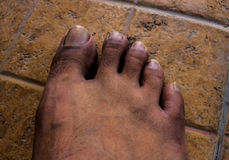Hope through the eyes of a child
Written by Sharon Cecil
 Once you have experienced hope through the eyes of a child who lives in poverty or a homeless shelter, you will never think of hope with the same perspective.
Once you have experienced hope through the eyes of a child who lives in poverty or a homeless shelter, you will never think of hope with the same perspective.
When attending a Day of Hope, parents prepare by hearing stories of past Day of Hope adventures or struggle with the thought of being taken to the country and being uneasy about the unknown that is facing them.
A child on the other hand, if left to their own volition, might conjure up the wonder and magical mystery of going to the country and what might be lurking in the woods. Children can create images that are unique and out of nowhere their inborn natural relationship with nature evolves.
It is such a joyful time seeing the children arrive with a bit of apprehension as they transform into the world of nature with such ease. While the older youth and adults are much more apprehensive, their transformation is not quite as quick. But, everyone seems to find his or her place in nature before the day is done.
 You may have heard the term “wide-eyed innocence” when it comes to a child or childish behavior. I personally find this behavior refreshing to see and experience. For a day, those who attend a Day of Hope are able to put their cares behind them and just be free to be.
You may have heard the term “wide-eyed innocence” when it comes to a child or childish behavior. I personally find this behavior refreshing to see and experience. For a day, those who attend a Day of Hope are able to put their cares behind them and just be free to be.
As a volunteer expresses in Day of Hope Inspires, “Seeing the children and families being able to enjoy their day with playing games and being out in nature and being able to forget about life for a while was a great opportunity for me as well.”
When visiting We Survive’s Haven of Hope, a Day of Hope offers nurturance in nature providing supportive surroundings cultivating a safe environment for participants and the wildlife
At the end of the day, the participants talk about hope around a symbolic lighthouse and each participant is given a Key of Hope as a reminder that “THE KEY—Open Hearts 2 HOPE.” Having been fortunate enough to see the children and families after Day of Hope events, many are still wearing their key around their neck with pride.
Remember
“You + Youth = Today’s Hope”
It is our HOPE that LIGHTFEST Re-Ignited will be world-changing!!


 March 15, 2016
March 15, 2016

 With aspirations of being a singer/songwriter
With aspirations of being a singer/songwriter 

 Support Sunshine Joe Mallard and please attend the Louisville African Heritage Festival on
Support Sunshine Joe Mallard and please attend the Louisville African Heritage Festival on 


 The Olympic Torch Relay is a ceremonial event focused on the Olympic Flame traveling from Olympia, Greece, to the site of the Olympic Games via a torch from person to person until it reaches its destination.
The Olympic Torch Relay is a ceremonial event focused on the Olympic Flame traveling from Olympia, Greece, to the site of the Olympic Games via a torch from person to person until it reaches its destination.



Follow Us!